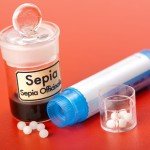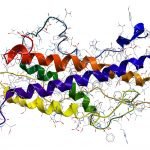Simeons’ Protocol – Part 2 of 2
Balancing Thyroid Function in a Patient With Metabolic Syndrome
Shaida Sina, NMD
Simeons’ Protocol has been observed to effectively balance hormones and may represent an alternative treatment for metabolic syndrome. This article will review how Simeons’ Protocol assisted a patient with metabolic syndrome to come off of thyroid medication.
Thyroid formulations (eg, levothyroid or dessicated thyroid) all have potential side effects. It does not matter if it is desiccated thyroid (typically porcine-derived) or synthetic thyroid hormone. Side effects of excessive thyroid medication may include rapid or irregular heartbeat (which may lead to a life-threatening episode of atrial fibrillation), chest pain or shortness of breath, muscle weakness, nervousness, irritability, sleeplessness, tremors, change in appetite, weight loss, vomiting , frequent bowel movements, excessive sweating, heat intolerance, fever, impaired fertility, change in menstruation, and decreased bone density.1,2
As an ND, I pride myself on differing from allopaths by exploring why a patient has an illness before putting him or her on a medication that may only serve as a Band-Aid. By removing impediments to cure, we can assist a person who has been suffering from a cluster of signs and symptoms to naturally heal and return to a healthy homeostasis.
In my practice, patients often come in on some form of thyroid medication who are still suffering from symptoms of hypothyroidism despite being given progressively higher doses of hormone. It is not uncommon to see a patient with a “normal” TSH level and hypothyroid symptoms such as low body temperature who is given thyroid medication to lose weight. Thyroid medication, however, may not be the answer. It is important to consider the differential diagnosis for the cause of hypothyroidism before giving the patient a prescription for thyroid hormone.
For example, primary versus secondary hypothyroidism should be reviewed before beginning treatment. According to the Merck Manual, the most common cause of hypothyroid is autoimmunity,3 which can be checked for by testing for anti-thyroglobulin (TG) and anti-thyroperoxidase (TPO) antibodies. This being said, I rarely see hypothyroid patients in my office who have been checked for antibodies. I will be brutally honest here: I think this is because practitioners don’t know how to treat autoimmune conditions, let alone Hoshimoto’s. In most cases, thyroid antibody testing appears to be performed only when the patient has a goiter or is difficult to treat.
The second most common cause of primary hypothyroidism is post-therapeutic hypothyroidism.3 This may be from radioactive iodine therapy or surgery for hyperthyroidism or goiter, including partial or complete thyroidectomy. Other causes of primary hypothyroidism includes iodine deficiency (congenital) and drug-induced cases (eg, from chemotherapy or lithium therapy.3 Chemicals in our environment can have a direct impact on the thyroid; therefore, environmental toxicity can be considered another cause of primary hypothyroidism. Some examples of compounds with known effects on thyroid function include: polychlorinated biphenols (PCBs), dioxins, pesticides, pentachlorophenol (PCP), bisphenol-A (BPA), and perfluorooctanoic acid (PFOA).4
Secondary hypothyroidism is most commonly due to hypothalamic or pituitary issues.3 NDs have a distinct advantage in understanding why secondary thyroid problems occur—we look outside the box. Listening to the story provides the road map back to health. Possible secondary causes of hypothyroid, which pose obstacles to cure, may include: heavy metals or toxic chemicals, head trauma, heat stroke, hemorrhage-induced anoxia, intestinal dysbiosis, extreme stress, and adrenal insufficiency.
Thyroid Function & Simeon’s Protocol
When I take a case for Simeons’ Protocol, I will usually take patients off thyroid medication if they have not been on it long or their dose is not very high. If a patient has had a thyroidectomy or radiation, her body will not be able to produce thyroid hormone; therefore, taking such patients off of thyroid medication and trying to revive the thyroid is not only futile, but dangerous.
According to Dr Simeon in his book, Pounds & Inches: A New Approach to Obesity,
“We never give a treatment lasting less than 26 days, even in patients needing to lose only 5 pounds. It seems that even in the mildest cases of obesity the diencephalon requires about three weeks rest from maximal exertion to which it has been previously subjected in order to regain fully its normal fat-banking capacity.”
A.T.W. Simeons5
When I first read this statement, I believed that Dr Simeons meant that in order to reestablish the endocrine axis (hypothalamus, pituitary, adrenal, thyroid, and gonadal glands), a patient must have 23 days of medication and cycle off HCG for 3 days, before entering phase 3 of the protocol. Following is a case I would like to share that illustrates how thyroid balancing may be achieved using Simeons’ Protocol, even with the patient discontinuing her thyroid medication two-thirds of the way through the 30-day round.
Case Study: History & Physical Exam
Mrs R is 55-year-old female who was under the care of an integrative OB-GYN. Her chief complaints were: 1) excess weight; 2) fatigue; 3) decreased libido; and 4) acne. Her previous doctor had her on a myriad hormones, iodine, and Vitamin D.
- Progesterone cream (100 mg/g): 1 click (25 mg) BID except during menses, applied to perianal area
- Testosterone cream (5mg/g): 1 click nightly except during menses, applied to clitoris area
- DHEA/Pregnenolone cream (5 mg/25 mg/g): 1 click BID, applied to vulva
- Levothyroxine (50 mcg): 1 QD
- Dessicated thyroid (1 grain): 1 TID
- Iodine/Potassium-iodide: 12.5 mg QD
- Vitamin D3: 5000 iu QD
I could not believe that she was on such a high dose of thyroid, so I called the compounding pharmacy to inquire about her prescription. The dose was confirmed, which shocked me. When I asked how it came to be that she was on such a dose, I was told that her dose had been progressively increased over a few years.
A review of her health history revealed that she had previously presented with hair loss (male pattern), heavy periods, and some dysmenorrhea. Her previous labs had shown elevated liver enzymes (hepatitis was ruled out; CT scan confirmed fatty liver disease), and a fasting plasma glucose of 150 mg /dL (impaired glucose tolerance).
My own physical exam of Mrs R revealed the findings listed in Table 1.
Table 1. PE Measurements
- Blood pressure: 145 / 105
- Pulse: 85
- Temp: 98.8 ºF (ear)
- Height: 64.5 inches
- Weight: 210 lbs
- Body mass index: 35.5 (obese)
- Waist to hip ratio: elevated
I performed Bio-impedance Testing,6 with the results listed in Table 2.
Table 2. Bio-impedance Test (In-Office Procedure)
Measurement: Patient Optimum
- Phase Angle 6.7 6.5
- Lean Muscle Mass 60 74
- Fat Mass 26 26
- Intracellular Water (%) 51 53
- Extracellular Water (%) 47 46
- Basal Metabolic Rate 1700
I asked her if anyone had discussed with her the diagnosis of metabolic syndrome. She said, “No, I have never heard that term.” For those who may not be familiar with the term, metabolic syndrome (also known as insulin resistance syndrome or syndrome X) is characterized by the presence of 3 or more of the following findings: a large waist circumference (due to excess abdominal fat), high blood pressure, elevated blood glucose, low HDL-cholesterol, and high triglycerides.7 I reviewed the syndrome with Mrs R and gave her some literature. I mentioned that metformin has been used successfully in treating metabolic syndrome, but also that there are natural therapies that could be considered. I asked if she had ever heard of Simeons’ Protocol, one of the possible options. She said she had tried some HCG drops 2 years prior, had lost only a small amount of weight, and felt starved the entire time. She had been put on oral drops of HCG and, uncharacteristically, was never taken off of her hormone replacement, including thyroid. She had not done the full Simeons’ Protocol, but was leery at the idea of trying any of it again. I suggested that we run some lab tests to confirm her diagnosis and to examine her thyroid more closely.
Initial Support
During this initial visit, Mrs R was given a limited treatment that focused on supporting her adrenals and blocking dihydrotestosterone (DHT) production. When working with complex patients, it is sometimes better to focus on 1or 2 chief complaints, so they do not become overwhelmed or frustrated.
For Adrenal Support:
- Combination of vitamin C, D-ribose, and calcium EDTA in a powder form: 1 tsp BID
- Pantothenic acid: 1000 mg BID
- Lepidium meyenii (maca): 500 mg QD (Note: This is a South American ginseng that helps promote qi and jing via testosterone metabolism.
For Enhanced Libido:
- Transdermal time-release, herbal patch containing maca, horny goat weed, and tribulis: Re-apply QD
Mrs R’s male pattern baldness suggested that she was possibly over-converting testosterone to DHT. As a result, I put her on natural 5-alpha-reductase inhibitors:
- Serenoa repens (saw palmetto berry) extract): 300 mg QD
- Zinc picolinate: 60 mg QD
Dietary Suggestions:
- Foods that were organic, antibiotic-free, and hormone-free
- Aim for 1300–1400 calories per day
- Eliminate simple carbohydrates
- Only use alternative sugar substitutes, eg, agave, honey, stevia, vegetable glycerin, xylitol
- Avoid artificial sweeteners and chemicals, since they can affect endocrine function.
First Follow-Up Visit & Lab Results
To help evaluate patients’ progress, I use my own female hormone survey, based on years of doing hormone testing. I also use a proprietary general health survey. On follow-up, Mrs R’s hormone survey score was cut in half compared to her initial score (reflecting improved energy, libido, and hair), and her health survey score had dropped from 36 to 24.
Mrs R’s follow-up lab results (Table 3), combined with her physical findings, indicated she indeed had metabolic syndrome. Surprisingly, her free T4 was lower than optimal. (Note: Optimal values listed are based on my years of clinical experience and having worked as a medical technologist.)
Table 3. Laboratory Results
| Laboratory Test | Result | Optimum Level |
| TSH | 0.013 uIU/mL (clinically low) | 0.1 -2 |
| Free T4 | 0.65 ng/dL (clinically low) | 1-1.8 |
| Free T3 | 2.4 pg/mL (too low) | 2.5-4.4 |
| Reverse T3 | 14.9 ng/dL | <20 |
| Anti-TPO | 19 (possible borderline) | <20 |
| Anti-TG | <20 | <20 |
| Total cholesterol | 198 mg/dL | 150-220 |
| HDL-C | 54 mg/dL | <60 |
| LDL-C | 131 mg/dL (clinically high) | <200 |
| VLDL-C | 13 mg/dL | <20 |
| Triglycerides | 66 mg/dL | <100 |
| Fasting glucose | 150 mg/dL | 70-85 |
| Hemoglobin A1C | 5.9% (clinically high) | <5 |
| Fasting insulin | 74 µIU/mL (clinically high) | <40 |
| C-reactive protein | 8.4 µmol/L | 1.7 |
| IGF-1 | 22 ng/mL | >200 |
| Complete Blood Count | wnl | |
| IgG antibodies to foods and Candida (94 antigens tested) | Only a moderate reactivity to wheat and gluten | No reactivity |
Treatment Using Simeons’ Protocol
We discussed Mrs R’s options for treating metabolic syndrome, including metformin and natural therapies for metabolic syndrome, such as alpha lipoic acid, an herbal formula, and chromium. Instead, she chose to do Simeons’ Protocol with me. Because she had been on such a high dose of thyroid medication for the last 5 years (3 grains of dessicated thyroid + 50 mcg of T4), I advised her to stay on her thyroid medication but to stop all her other hormones, including the herbal patch for libido.
To summarize Simeons’ Protocol, the first 2 days (Phase 1) consist of HCG drops and a diet high in fat and sugar. Phase 2, spanning Days 21 through 38, consists of HCG drops and a very low-calorie diet. In Phase 3, HCG is discontinued, the diet excludes starches and sugars, and food reintroduction is begun, with the patient watching for food reactions. My recommendation is to begin reintroducing 1 new food at a time, beginning with fruits, vegetables, and proteins that are not included during the first 3 weeks of Phase 3. During the second 3 weeks of Phase 3, more complex carbohydrates are reintroduced, including legumes, nuts and seeds.
Mrs R was prescribed injectable HCG (purified from urine of pregnant women and compounded). She was given a Candida cleanse even though she was negative for antibodies in the blood. I do this because the “gorging” during Phase 1 of Simeons’ Protocol can feed yeast, also because intestinal cleanses are often helpful while detoxing during HCG treatment. During Phases 1 and 2 of Simeons’ Protocol, she did a 30-day round of the compound, using 150 IUs via subcutaneous injection. She also followed an allergy elimination diet, staying off wheat during Phase 3 of the protocol.
Second Follow-Up Visit, During Phase 3 of Simeons’ Protocol
During her Phase 3 follow-up visit, Mrs R requested refills on all of her previous medications. I asked her to do a symptoms and hormone survey using my follow-up visit update form. Apparently she had used up the last of her hormone replacement prior to starting Simeons’ Protocol, and ran out of her thyroid medication on the third week of the protocol (as a reminder, she was on 3 grains of thyroid and 50 mcg of T4 per day, so for the last 7 days she had not taken thyroid medication). Her follow-up visit update form indicated that she lost 25 lbs since her first visit, had gone down 3 dress sizes, and was maintaining her weight nicely. Her health symptom survey, which originally showed a score of 36, now showed a score of 7. Her hormone survey, which initially scored 18, was now 7 (despite being off all hormones). Mrs R intended to go back on a round of HCG, following Simeons’ Protocol within a few weeks. Instead of authorizing refills on her previous prescription, I ran lab tests on her thyroid (Table 4).
Table 4. Follow-Up Thyroid Lab Results
| Laboratory Test | Result | Optimum Level |
| TSH | 2.2 uIU/mL | 0.1-2 |
| Free T4 | 0.9 ng/dL | 1-1.8 |
| Free T3 | 2.2 pg/mL | 2.5-4.4 |
Her free T3 and T4 were only borderline-low and her symptom- and hormone scores were low, so I elected to not put her back on thyroid. Instead I asked her why she felt she needed hormones. She said she was feeling irritable like she did 5 years ago when she went on HRT. What I felt she was describing were PMS-like symptoms. Instead of putting her on more thyroid and sex hormone therapy, I recommended liver support (lipotropic herbs, L-methionine, inositol, L-cysteine, and vitamins B6 and B12) to address the PMS-type symptoms.
Third Follow-Up Visit, 3 Months After Completion of Phase 3
Post-Simeons’ Protocol (after completion of Phases 1, 2, and 3) plus 3 more months out, Mrs R was still off thyroid and other hormone replacement. However, she had begun to put on a few pounds and was beginning to have some hormonal symptoms. Acne and frontal hair loss were worsening, most likely, I felt, because she had run out of zinc and saw palmetto. With a history of fatty liver, increased hormonal conversion from testosterone to DHT is common. Her loss of libido and her irritability were also worse. Mrs R was scheduled for a follow up visit and was given an order to repeat her labs prior to the visit.
Fourth Follow-Up Visit & Lab Results
During her follow-up interview 5 months later, Mrs R reported that she had reintroduced wheat into her diet. I believe this was why she had had an increase in weight and hormonal symptoms, as well as the increase in TSH. Moreover, after her completion of Phase 3, she had tear duct surgery for a chronic sinus issue and was given antibiotics. Shortly thereafter, she developed severe hemorrhoids, which were treated surgically. With this progression of history, it is not unusual for periods to become heavier and more painful. PSM symptoms were beginning 2 weeks prior to menstruation. Lab follow-up (Table 5) was interesting and somewhat impressive. I did not repeat her hormone panel because I thought she was going to go straight into another round of Simeons’ Protocol.
Table 5. Follow-Up Laboratory Results
| Laboratory Test | New Result | Previous Result |
| Fasting glucose | 99 mg/dL | 150 mg/dL |
| Fasting insulin | 21 µIU/mL | 74 µIU/mL |
| Total cholesterol | 190 mg/dL | 198 mg/dL |
| Homocysteine | 6.7 µmol/L | 6.7 µmol/L |
| Fibrinogen | 343 mg/dL | 273 mg/dL |
| C-reactive protein | 1.2 µmol/L | 1.7 µmol/L |
| Liver enzymes | Normal | |
| Complete Blood Count | Borderline-high Hgb & Hct |
The Plan, Going Forward
Mrs R was advised to go back on an allergy elimination diet. She was also to resume adrenal support and natural 5-alpha reductase inhibitors. Because her fibrinogen was elevated and her Hgb and Hct were both borderline-high, I recommended that she donate whole blood and begin fibrinolytic therapy. Hypercoaguability is an important cardiovascular risk factor, especially if I were to put her on Simeons’ Protocol again. This is because, similar to several other hormones, HCG can increase the risk of blood clots.8 To reduce the risk, I recommend running labs, especially for patients who may be at risk of having thick, sticky blood (my checklist includes patients on anabolic hormones, ie, testosterone, DHEA, or patients on estrogen therapy who have no uterus, who have metabolic syndrome, or who have a family history for cardiac, stroke, or deep vein thrombosis). I usually order a test for fibrinogen, which is the precursor to fibrin, the final step in the coagulation pathway.9 I recommended to Mrs R that we monitor her hemoglobin, hematocrit, and fibrinogen prior to resuming Simeons’ Protocol.
 Shaida Sina, ND has been working in the field of medicine for more than 20 years. Her initial training began as a clinical scientist where she received her bachelors of science degree from University of Maryland’s School of Medicine’s Department of Medical and Research Technology. During her first 10 years in healthcare, she worked in the field of laboratory medicine where she ultimately became lead technologist of a reference infectious disease laboratory. Dr Sina began her studies in natural medicine in 1995 at Southwest College of Naturopathic Medicine, Tempe, Arizona. She has an extensive background in infectious disease and has trained at the Being Alive Center (an HIV center) located in Phoenix. Dr Sina was the first naturopathic physician to do a clinical rotation at Mayo Clinic where she trained in Reproductive Endocrinology. Dr Sina completed post-doctorate training and received certification in the field of environmental medicine with an emphasis in chemical and metal detoxification.
Shaida Sina, ND has been working in the field of medicine for more than 20 years. Her initial training began as a clinical scientist where she received her bachelors of science degree from University of Maryland’s School of Medicine’s Department of Medical and Research Technology. During her first 10 years in healthcare, she worked in the field of laboratory medicine where she ultimately became lead technologist of a reference infectious disease laboratory. Dr Sina began her studies in natural medicine in 1995 at Southwest College of Naturopathic Medicine, Tempe, Arizona. She has an extensive background in infectious disease and has trained at the Being Alive Center (an HIV center) located in Phoenix. Dr Sina was the first naturopathic physician to do a clinical rotation at Mayo Clinic where she trained in Reproductive Endocrinology. Dr Sina completed post-doctorate training and received certification in the field of environmental medicine with an emphasis in chemical and metal detoxification.
References
- Armour Thyroid. Forest Laboratories, Inc. [homepage]. 2013. http://www.armourthyroid.com/. Accessed April 23, 2013.
- Possible Synthroid Side Effects. AbbVie, Inc. [homepage]. 2013 http://www.synthroid.com/WhatIsSynthroid/SideEffects.aspx. Accessed April 23, 2013.
- Hypothyroidism. The Merck Manual for Health Care Professionals. [homepage]. Updated May, 2012. http://www.merckmanuals.com/professional/endocrine_and_metabolic_disorders/thyroid_disorders/hypothyroidism.html. Accessed April 23, 2013.
- Marchese M. 8 Weeks to Women’s Wellness: The Detoxification Plan for Breast Cancer, Endometriosis, Infertility and Other Women’s Health Conditions. North Haledon, NJ: Smart Publishing; 2011.
- Prinster L. HCG Weight Loss Cure Guide: A Supplemental Guide to Dr. Simeons’ Pounds and Inches Supporting All Types of HCG. 4th revision. Wentzville, MO: Everything Matters Publishing; 2012.
- Clinical Desk Reference for BIA Testing. Biodynamics Corp. 2003-2013.
- Metabolic Syndrome. The Merck Manual Home Health Handbook for Patients and Caregivers. [homepage]. Updated April, 2013. http://www.merckmanuals.com/home/disorders_of_nutrition/obesity_and_the_metabolic_syndrome/metabolic_syndrome.html. Accessed May 19, 2013.
- Pregnyl. RxList. [Web site]. http://www.rxlist.com/pregnyl-drug/patient-images-side-effects.htm. Accessed April 23, 2013.
- Kumar, Cotran, Robbins, eds. Basic Pathology. 6th ed. Philadelphia, PA: W.B. Saunders Company; 1997.










